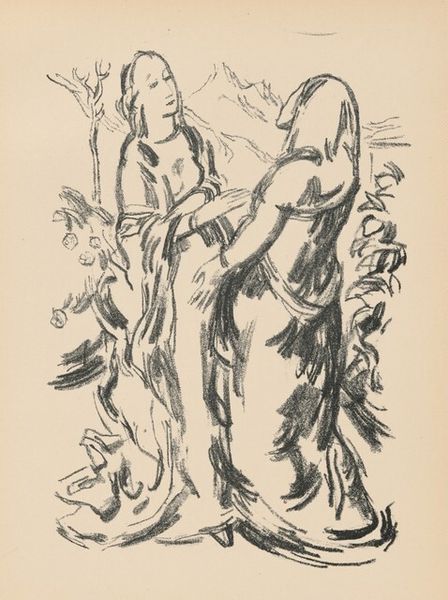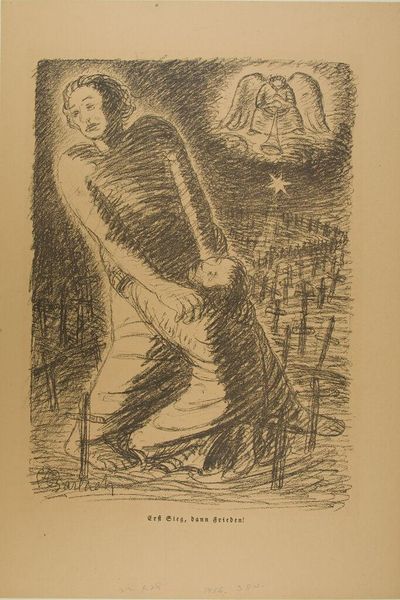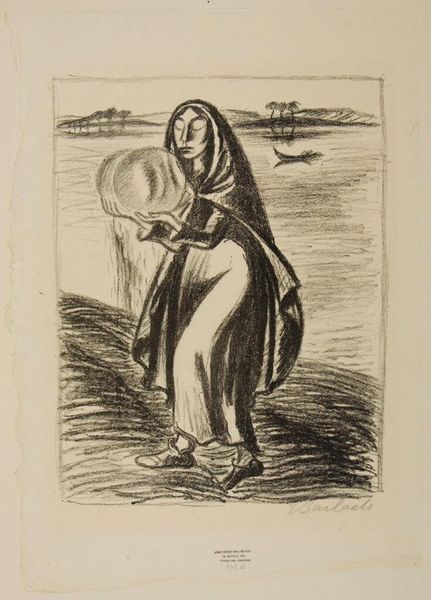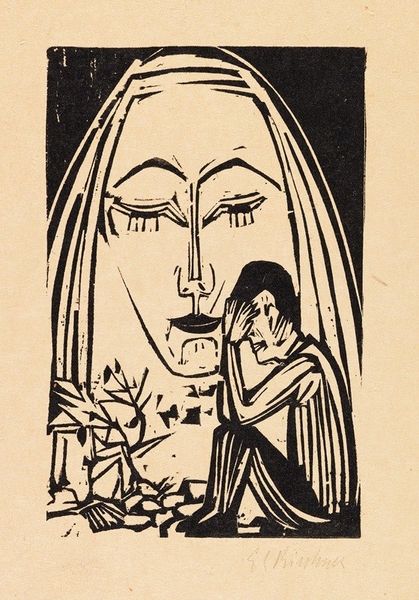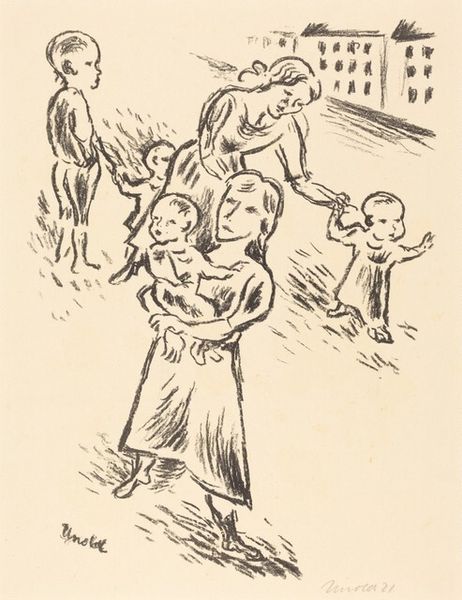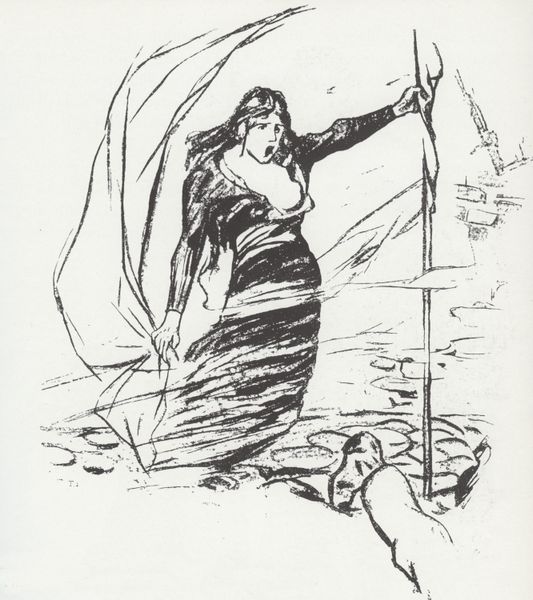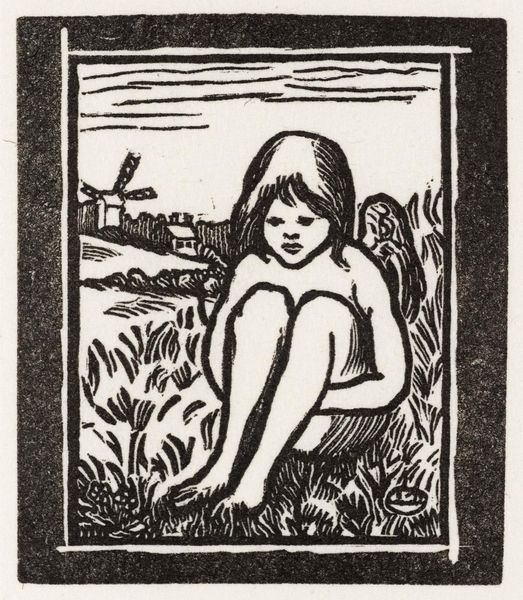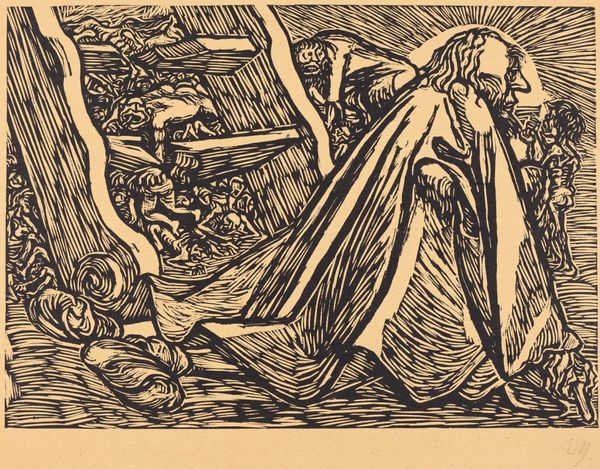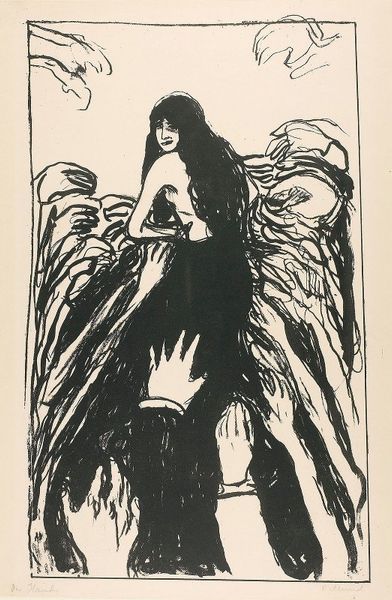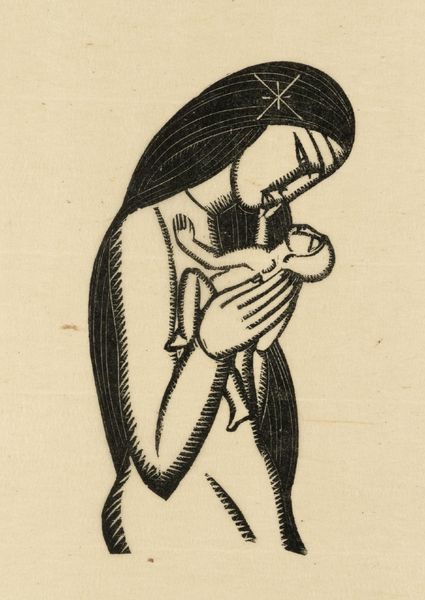
Copyright: Public Domain: Artvee
Editor: This is "By the Water," a pen and ink drawing from 1917 by Arnold Peter Weisz-Kubínčan. There’s a real starkness to it with the sharp lines and the contrast of the ink. The woman's pose looks really vulnerable. What strikes you when you look at this? Curator: The figure’s nudity, situated "by the water," immediately makes me think about historical and cultural constructions of women's bodies and their connection to nature. Think about how often women, particularly women of color, have been presented as inherently linked to the natural world, often framing them as more instinctual or less civilized. Does Weisz-Kubínčan engage with or subvert this tradition, especially considering the historical context of 1917 and the upheavals of the First World War? Editor: That’s interesting. I hadn't considered that angle. I was focused on the sort of…exposed feeling the drawing has. Curator: Right, but exposed to what? What about the mark-making itself? Notice how the halo-like arrangement of dots around her seems to cage her in, while also elevating her. The harsh ink strokes denote the roughness of the stone. Is this roughness a form of violence? How might ideas around feminine ideals relate to the experience of the Great War? Do you think the work normalizes or perhaps problematizes dominant, perhaps even idealized notions of female beauty at that time? Editor: I think it's somewhere in between, honestly. I do see the confinement you're talking about now, but there's also something very powerful about the figure itself, she’s self-possessed. Curator: Exactly. And that tension, that ambiguity, opens up possibilities for resistance and reinterpretation. It makes us consider the power dynamics at play, then and now, in how we see and represent women’s bodies. Editor: That’s given me a lot to think about, and helped me appreciate how context really influences how we read images! Curator: And for me, it highlights how even seemingly simple artistic choices can be loaded with social and historical meaning.
Comments
No comments
Be the first to comment and join the conversation on the ultimate creative platform.
